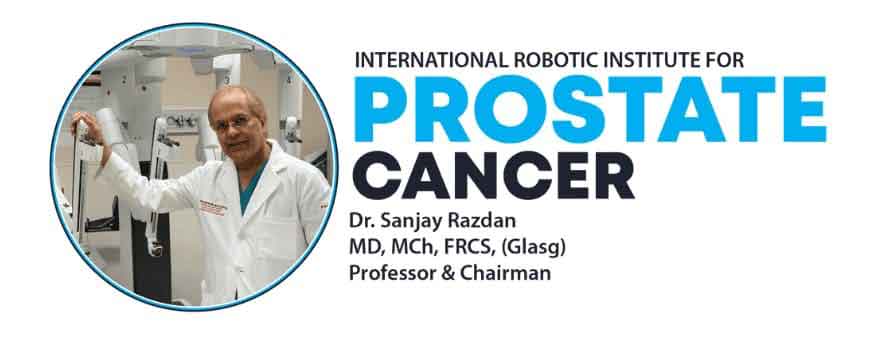Why is a Prostatectomy performed?
Prostatectomy is a procedure to cure localized prostate cancer. It may be used alone, or in conjunction with radiation, chemotherapy and hormone therapy. Prostatectomy to treat prostate cancer involves removing the entire prostate, seminal vesicles and some surrounding tissue, including lymph nodes. Radical prostatectomy, which involves the complete removal of the prostate, is the gold standard for the majority of patients with organ-confined prostate cancer. Its appeal lies in the degree of certainty it offers in terms of removing the disease in one strike. This has been understood to be the safest way of eradicating cancer but there can be side effects if not performed by an expert prostate cancer surgeon.
Risks with Radical Prostatectomy:
A traditional radical prostatectomy is undertaken using wide margins around the prostate, damaging the nerves which control the blood supply to the penis. This can lead to urinary incontinence (being unable to control urine) and erectile dysfunction (unable to get an erection).
What is Robotic Prostatectomy?
In a robotic prostatectomy, the minimally invasive surgery is performed using the Davinci Robotic system. Dr. Razdan sits at a control panel in the operating room and moves robotic arms to operate through several small incisions in the patient’s abdomen. Surgical robotics combines minimally invasive techniques with highly advanced clinical technology and expertise. Dr. Razdan’s Nerve sparing approach is a unique type of surgery that protects the nerves near the tissues being removed. Robotic surgery provides 3D vision and precise direction that allow for a very precise nerve sparing approach.
Benefits of Nerve Sparing Robotic Prostatectomy:
Nerve-sparing robotic prostatectomy by Dr. Razdan provides cancer patients with a safe and minimally invasive technique for removal of the prostate gland. Robotic prostatectomy has many benefits. The high tech equipment used to accomplish this surgery allows the surgeon to operate through small ports while visualizing internal organs in high definition. Nerve-sparing robotic prostatectomy allows surgeons to operate with the same flexibility and ease as an open surgeon has when performing open prostatectomy. This approach has some key benefits that include:
- Smaller incisions and less scarring
- Less blood loss (< 100-200 ml)
- Less need for blood transfusions (<1-2%)
- Short hospital stay (1 day for most patients but many can go home the same day)
- Less postoperative pain and usually minimal need for pain medication
- Short recovery time and quick return to normal activity (two to three weeks)
- Early return of sexual function
- Low risk of urinary incontinence
- Preserving much of the surrounding nerve structures responsible for penile erections
Recent clinical data has proven that patient outcomes are usually greater when performed by a high volume prostate cancer surgeon.
Final Words:
Overall, with the advent of new technologies and safer alternatives to invasive treatments, it has become possible to limit the risks associated with prostate cancer surgery. By combining the latest technological advancements along with 3D imaging in nerve-sparing robotic prostatectomy, the life spans of prostate cancer patients have increased with shorter recovery times.






